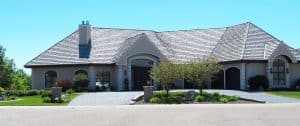The Rise of Micro-Communities: Reinventing Urban Neighborhoods
The rise of micro-communities is a phenomenon that is rapidly transforming urban neighborhoods around the world. These small, tight-knit groups are changing the way we think about community and are redefining what it means to live in a city. With the increasing urbanization and density of our cities, people are looking for ways to create a sense of belonging and connection in their immediate surroundings. Micro-communities offer just that, allowing residents to connect, collaborate and build a unique identity for their neighborhood. In this article, we will explore the rise of micro-communities and how they are reinventing urban neighborhoods.
The Changing Landscape of Urban Living
The world’s population is becoming increasingly urban, with an estimated 68% of people living in cities by 2050. With this rapid urbanization, traditional notions of community are being challenged. These days, living in a large city doesn’t necessarily mean being a part of a close-knit community. People often feel disconnected and isolated, even in a densely populated area. This is where micro-communities come in.
What Are Micro-Communities?
Micro-communities are small, localized groups of people who share common interests, values, or goals. They can range in size from a handful of individuals to a couple hundred residents. These groups are typically formed organically, with members living in close proximity to one another in a particular neighborhood or building.
Micro-communities are not limited to a specific demographic or age group. They can be based on shared interests, such as art, music, or sustainability, or they can be formed around the needs and interests of a specific group, such as families with young children or retirees. The key factor is that these communities are centered around a common purpose or identity.
The Benefits of Micro-Communities
A Sense of Belonging
In a big city, it can be challenging to feel like you belong. Micro-communities provide a sense of belonging and connection to others in your immediate surroundings. People living in these communities often report feeling a strong sense of community and support, making it easier to build relationships and establish a sense of home.
Sharing Resources
One of the main benefits of micro-communities is the ability to share resources. With people living in such close proximity, it’s easy to share tools, equipment, and other items, reducing the need for everyone to own their own. This not only saves money but promotes a more sustainable lifestyle.
Collaboration and Creativity
Micro-communities foster collaboration and creativity by bringing together people with diverse skills and interests. Residents can work together on projects, share ideas, and support one another in their endeavors. This leads to a more vibrant and dynamic community, with new and innovative ideas constantly flowing.
The Impact on Urban Neighborhoods
The rise of micro-communities is having a significant impact on urban neighborhoods. These small communities are revitalizing once neglected areas, bringing people together and creating a sense of pride and ownership within the neighborhood. They are also promoting diversity and inclusivity, with people from different backgrounds and walks of life coming together under a common purpose.
Micro-communities are also transforming the physical landscape of urban neighborhoods. These groups are often driven by a desire for more sustainable living, leading to the development of eco-friendly and community-driven spaces. This can include community gardens, shared workspaces, and even car-sharing services.
Challenges and Future Outlook
While micro-communities offer numerous benefits, there are also some challenges to consider. One of the main challenges is maintaining the cohesion and longevity of these communities. With people’s busy lives and schedules, it can be challenging to keep everyone engaged and committed to the community’s goals. There is also the issue of inclusivity, as these communities can often become exclusive and closed off to outsiders.
Nevertheless, the future looks bright for micro-communities. As more people seek a sense of belonging and connection in their urban surroundings, these communities will continue to grow and evolve. With technology and social media connecting people like never before, the potential for micro-communities to thrive is immense.
In Conclusion
The rise of micro-communities is a result of the changing landscape of urban living. These small, tight-knit groups are redefining what it means to live in a city, promoting a sense of belonging and connection among residents. With their many benefits and potential for growth, it’s safe to say that micro-communities are here to stay, reinventing urban neighborhoods for the better.










